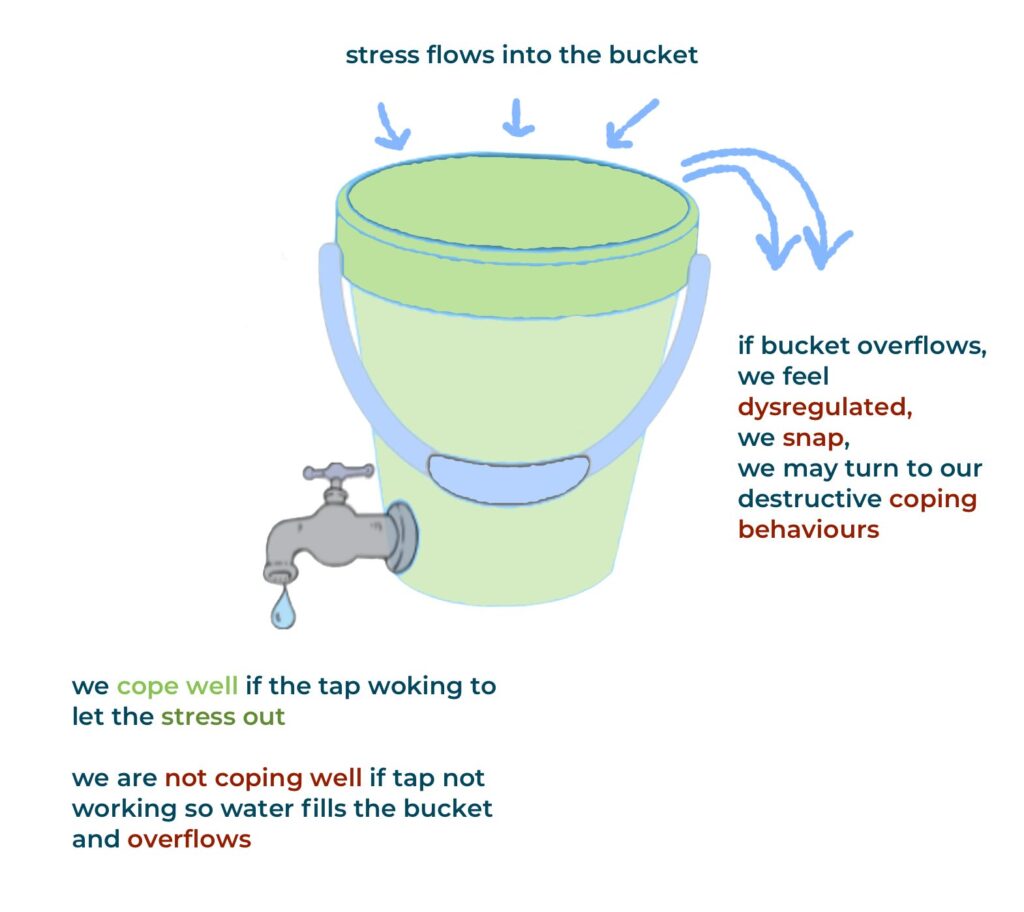What is Window of Tolerance and how can it help us in understanding our behaviours and reactions to every day stresses?
Out and in control of emotions
Being emotionally dysregulated means we can’t regulate or control our response to a stressful or triggering event. Can you recall a recent situation in your daily life when you felt dysregulated – or, as many of us say, out of control?
The term ‘Window of Tolerance’ refers to the opposite, optimal state of calmness, feeling connected to others and able to receive information and deal effectively with day-to-day stresses. The term was introduced by psychiatrist Dr Daniel Siegel.
Most of us can deal with daily challenges and stresses with ease, but if you have experienced anxiety or trauma in the past, staying in your Window of Tolerance might be more difficult. When you are dysregulated, you are much more likely to use a familiar coping mechanism (such as addictive behaviours) to deal with stress.

Triggers and glimmers
One of the most profound ways in which I work with my clients on changing behaviours and habits is defining their Window of Tolerance and identifying their triggers and glimmers. Triggers cause us to drift away from our Window of Tolerance, so it’s important to look for ways to minimise them in daily life. Glimmers are the opposite of triggers, and are less familiar to most of us because our flight/fight/freeze/fawn response to threat is so deeply ingrained in our nervous system.
Glimmers are clues that signal safety, helping us feel relaxed and open to making a connection with other people. We all have the power to reach deep within ourselves to find these glimmers, so we can incorporate them into daily life and use them to regulate ourselves during stressful situations.
Managing triggers and glimmers is a skill, so it gets better with practice. We can train ourselves to be more aware of these negative and positive influences, becoming more responsive to the glimmers around us and less reactive to our triggers.
I will write in more detail about triggers and glimmers in my next posts.
Here is a brilliant infographics on the Window of Tolerance.







